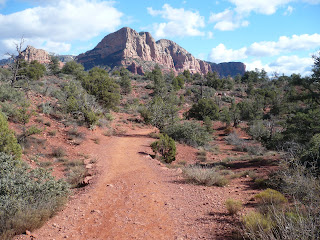George & I had visited during our honeymoon in June, 1990, so we already knew what to expect. It’s the Grand Canyon, and it’s, well….just GRAND! Actually sometimes it’s grander than other times because sometimes you can hardly see it through the smog. Sometimes it’s so crowded with bus-loads of tourists and kids on summer vacation that you can’t see it. I highly recommend November--no smog, no buses, no kids. Grand views!
On the other hand, the days are shorter this time of year. To make the most of our time, the ranger advised us to take the shuttle and suggested we go to Hermit’s Rest.
There was only 1 other person on the bus to the Hermit’s Rest transfer—major difference from last time! We got off at Powell Point, then walked the Rim Trail a whole .3 mile to Hopi Point. Not a lot of exercise this time out.
There was only 1 other person on the bus to the Hermit’s Rest transfer—major difference from last time! We got off at Powell Point, then walked the Rim Trail a whole .3 mile to Hopi Point. Not a lot of exercise this time out.
Yes, I know it’s a big hole in the ground. But it’s a pretty impressive one, possibly even grandiose. J
That really sank in for me when the bus driver said that the rapids on the Colorado River below were a mile long!
Was the drive worth it? Sure--it is, after all, the GRAND Canyon.
Click for more pics of the South Rim of the Grand Canyon












































